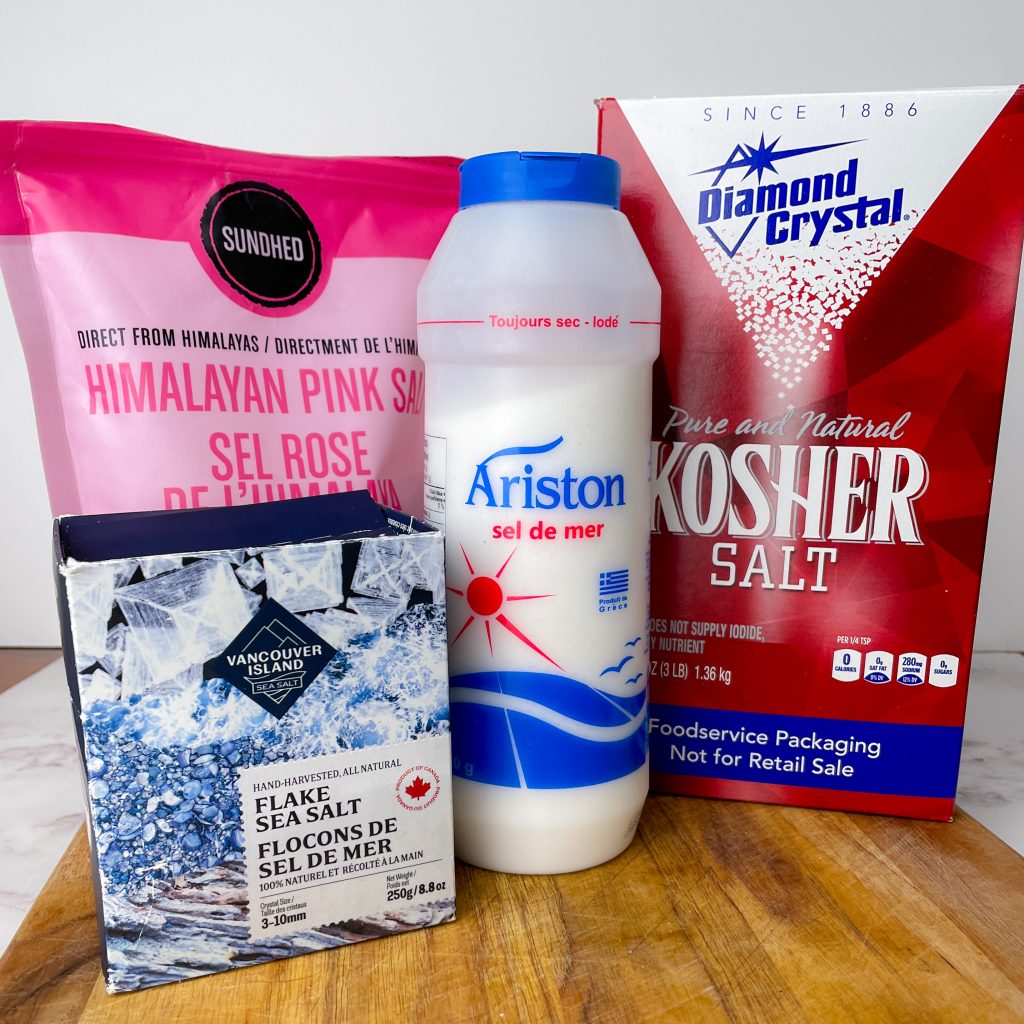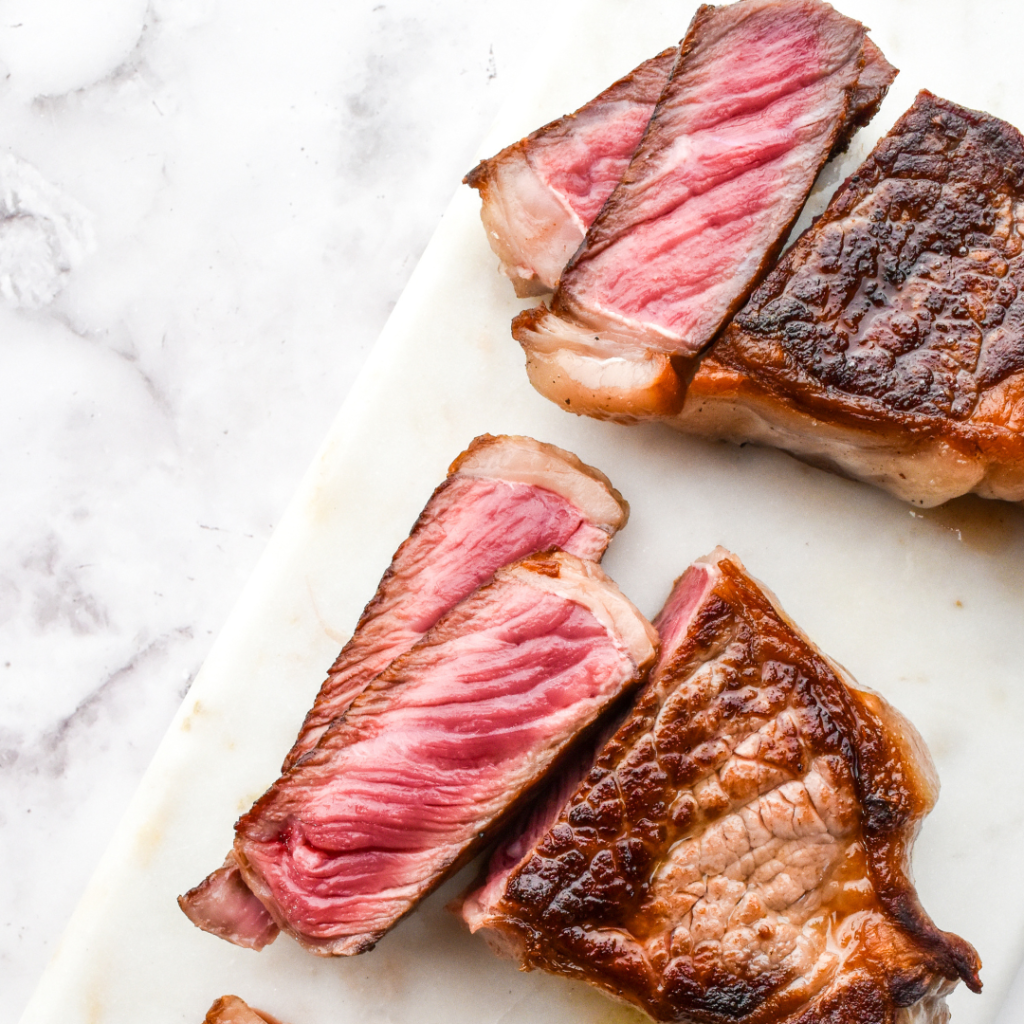A beautifully glazed ham is a holiday classic! And as the busy holiday season approaches, we’re sure you’re wondering:What kind of ham should I get? Bone-in or boneless? Do I remove the rind? How long do I cook ham for? What size of ham do I need? and so on!
We’re covering the answers to all your ham-related questions. Plus, you can snag our Orange Maple Marmalade Glazed Ham Recipe for a flavourful, juicy ham at home. We’ll start with the basics and review what the word ham actually means…
What is Ham?
Ham is commonly thought of as a ready-to-eat, smoked ham, however the word ‘ham’ doesn’t mean it is cured nor smoked. Ham refers to the cut of pork which is the rump area of a pig.
Ham that isn’t cured or smoked is referred to as a ‘fresh ham’ (it’s uncooked and ready for you to brine and smoke it yourself). A smoked ham has been cured and smoked and is usually sold as partially or fully cooked.
Where to Buy a Smoked Ham
Looking for a smoked ham for the holidays? For some of the best ham, check with your local farmer or butcher. Ordering ahead is a good idea to make sure you get one! No one likes being left ham-less at holidays such as Easter, Thanksgiving and Christmas.
Your butcher can help you decide which type of ham is the best option based on your preferences and the number of guests you are serving.
Bone-In or Boneless Ham?
You’ll need to decide whether you want to go bone-in or boneless. Our preference is a bone-in smoked ham because of the flavour that the bone imparts. And if you are like us, we love that ham bone! Hold onto it. Freeze it for later if you have to. It makes the best ham soup!
Others may prefer the ease of cutting a ham without having to maneuver their knife around the ham bone. If that’s you, look for a boneless smoked ham or a black forest ham.
What Size of Ham Do I Need?
A general rule of thumb when serving meats is to have:
- ¾ – 1 pound of meat per guest for bone-in meats OR
- ½ pound per guest for boneless meats
Therefore, if you are having 10 guests you would need a 7-10 lb bone-in ham or a 5 lb boneless ham.
What’s the Best Ham to Buy?
You have a few different choices when buying a ham:
- Smoked bone-in ham (whole, half ham or quarter ham)
- Boneless smoked ham
- Black forest ham
- Spiral-cut ham
- Fresh ham

Smoked Bone-In Ham
A whole, smoked bone-in ham tops the scales at a whopping 20 or 30 lbs. That’s enough to feed a crowd of 26-40 guests. If that’s too much, your butcher can cut the ham giving you a 10-15 lb ham (half ham) or a 5-7 lbs ham (quarter ham). Just note that when you get a small quarter ham it may not contain any bone in it. If you’re looking forward to making soup with the ham bone, we suggest requesting at least a half ham.
Smoked bone-in hams are often covered in a thick layer of fat and skin. You may also find them with the skin removed and the fat trimmed to a thin layer (just enough fat to keep the meat moist).
Smoked Boneless Ham
This ham can look like the bone-in version or it can have the uniform, textured look of a black forest ham (if you butcher uses mesh netting to smoke hams in an upright smoker). These hams are often 5-12 lbs. Since there is no bone, this ham is easy to slice and serve. At Heatherlea, we call this ham a Trophy Ham.
Black Forest Ham
The black forest ham is easier to find in stores and butcher shops. It differs from the boneless ham, in that the boneless ham generally has the muscles left intact while the black forest is more processed (meat has been pulled apart and then pressed back together to form the ham).
Spiral-Cut Ham
A spiral cut ham is precut in slices while the meat still remains attached to the bone. Although spiral hams are popular, the pre-slicing can make the meat dry.
Fresh Ham
A fresh ham is the term used if you are looking for a ham (rump of the pig) that hasn’t been cured or smoked. You usually only request a fresh ham if you plan on brining it and smoking it yourself at home or enjoying it as a roast.
If you’re looking for a flavourful and juicy ham, we suggest an unsliced bone-in, skin-on ham smoked ham. This ham has all the flavour from the bone and the fat covering to baste the meat and keep it moist.

Do You Remove the Rind from Ham Before Cooking?
The ham rind is a thick rubbery skin on the outside of the ham. The rind can be delicious when it’s made into a crispy pork skin called crackling. Making crackling out of smoked pork skin can be tricky and the skin blocks the delicious flavours of your glaze. For those reasons, we suggest removing the skin (but leave the layer of fat!).

How to Remove Ham Rind?
- Insert a knife between the rind and the fat and run it along to separate the rind layer.
- Use your hands to gently separate the rind from the fat. Taking care to leave the layer of fat intact. It should come off easily.
- Peel off and discard the rind.
- If the fat layer is very thick, use your knife to trim some fat off so that you leave about ¼ inch layer of fat.
Tips for the Best Baked Ham
- Let it sit at room temperature: Remove the ham from the refrigerator to bring it up to room temperature prior to cooking (approximately 1-2 hours before cooking)
- Score the fat: in a cross-hatch pattern, only cutting as deep as the fat layer (don’t cut into the meat. This allows the glaze to reach the meat.
- Don’t Burn the Glaze: Glazes are full of sugar that can burn easily and turn bitter at high temperatures. Keep an eye on the ham when cooking at higher temperatures for the final few minutes of cooking.
- Cook or Warm the Ham Using a Thermometer: Avoid over-cooking your ham by using a thermometer to check the temperature of the ham. Most hams come partially or full cooked (check the label) so you are just warming them. Pre-cooked smoked hams are warmed to 140F, while uncooked cured hams are cooked to 160F.
- Let it Rest: For a juicy ham, you should let the ham rest for about 20 minutes before carving.
How to Cook a Ham
Precooked Ham
Hams that are pre-cooked are black forest hams, spiral hams and usually boneless hams (we call these trophy hams). Check the label if you are unsure, or ask your butcher. These hams are already cooked so they just need to be warmed up. Place in a pan with liquid in the bottom, cover with foil and bake at 325F for approximately 10-15 minutes per pound or until it reaches an internal temperature of 140F. Let the ham rest for 15 minutes under foil before carving.
Uncooked or Partially Cooked Hams
Uncooked hams may be cured and smoked but still require cooking to become fully cooked, such as the bone-in, skin-on ham. This ham should be placed in a baking tray and covered with foil. Bake for 15-18 minutes per pound until the temperature reaches 150-155F. Glaze can be applied in the final stages of cooking. Remove the ham from the oven, cover loosely with foil and let it rest for 20 minutes or more (the temperature will rise to 160F).

Baked Ham with Orange Bourbon Glaze Recipe
Ham + Glaze Ingredients
1 bone-in, skin on smoked ham (14 lbs)
¾ cup orange marmalade
¼ cup maple syrup
¼ cup bourbon or dark rum
2 tbsp lemon juice, freshly squeezed
Sea salt
Freshly ground pepper
Mustard Sauce Ingredients
½ cup whole grain mustard
¼ cup Dijon mustard
3 tbsp reserved glaze
Directions
1. Position the rack in the lower third of the oven and preheat to 325F. Line a baking tray or dish with long strips of foil (enough to cover the ham).
2. Remove the ham from the package and trim the skin and excess fat (leave ¼ inch fat layer).
3. Score the fat in a diagonal cross-hatch pattern, being careful not to cut into the meat. This will make for a pretty pattern on the ham as well as allow the glaze to permeate the meat.
4. Let it rest at room temperature: Place the ham cut-side down on the baking tray or pan and let it rest at room temperature for at least one hour prior to cooking.
5. Prepare the glaze: Heat the orange marmalade, maple syrup, bourbon, and lemon juice in a saucepan until bubbly. Cook until reduced and a thicker. Season with salt and pepper to taste. Reserve 3 tbsp for the mustard sauce.
6. Bake the ham: Fold the foil up over the meat. Seal the foil to create a pouch that will keep the ham moist. Remove the ham from the oven when the internal temperature reaches 120F. Raise the oven temperature to 425F, remove and discard the foil.

7. Glaze the ham: Brush the ham with glaze (rewarm if needed), working the glaze into the cross-hatchings and return the ham to the oven to bake. Continue brushing the ham again with glaze every 5 – 10 minutes. Total cooking time for the ham is about 15-18 minutes per pound. Remove the ham from the oven when the glaze is shiny and golden and the temperature reaches 150-155F. If the glaze isn’t golden to your liking, broil it for a few minutes to darken the glaze. Alternatively, if the glaze is browning too quickly, turn the temperature down to 350F (loosely cover with foil if needed).
8. Let it rest: Tent loosely with foil and let it rest for at least 20 minutes or up to 2 hours before slicing. The temperature will continue to rise to a final temperature of 160F.
9. Make the Orange Maple Bourbon Mustard: Mix 3 tbsp of the reserved glaze with the Dijon and grainy mustard.
10. Slice the ham and serve with the mustard sauce. Enjoy!










